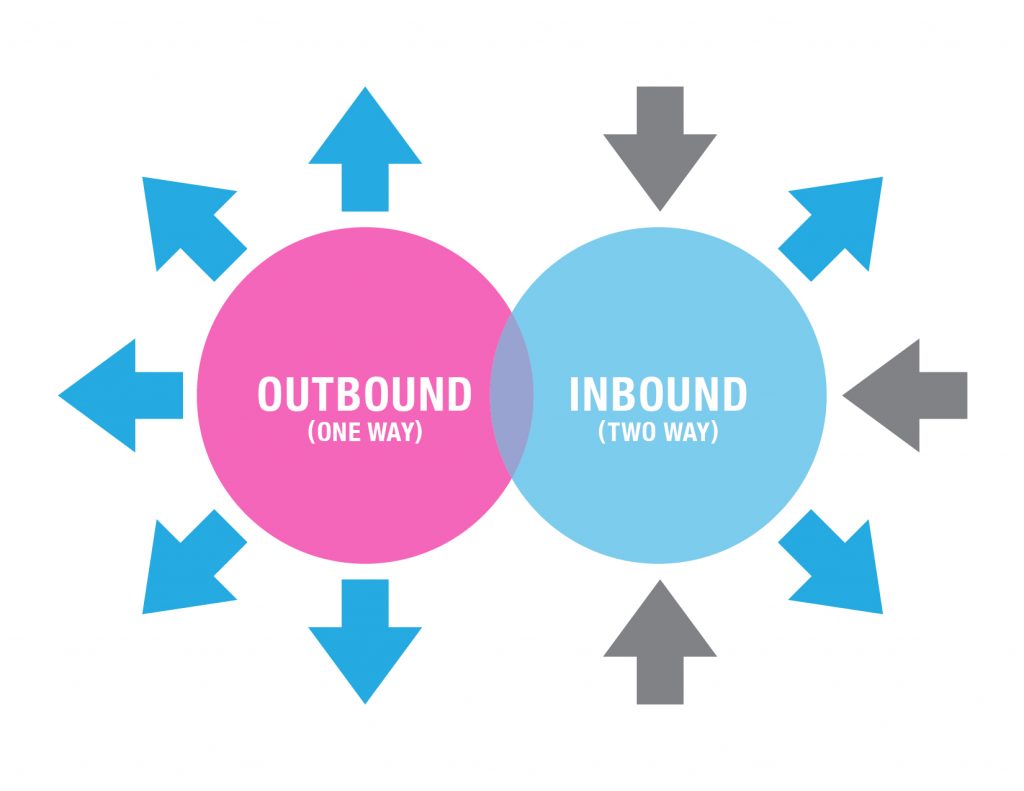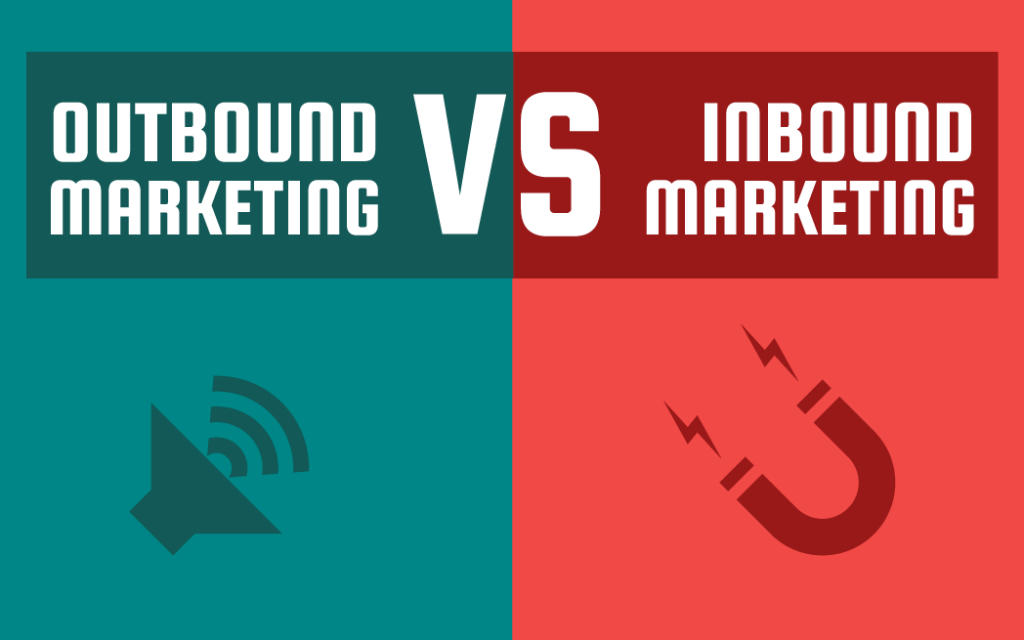
Selling a product or service is useless unless you have a customer base who wants what you’re providing. Thus, marketing is an invaluable tool in both informing the public about your product and convincing them to buy. Marketing techniques and services have evolved over the years to fit the needs and attitudes of the day, and two terms that are constantly floating around are inbound marketing and outbound marketing.
You may have heard these terms and wondered what they mean, how are they different, and should I use either for my business? The methods you use to market your product is just as important as the marketing itself. To answer those questions, we’ll be going in-depth on what inbound and outbound marketing are, and how they can impact your bottom line.
What are inbound and outbound marketing?
Inbound marketing focuses on attracting customers by providing information in spaces where they can search for it. The idea behind it is that rather than delivering information directly to a prospect base, you put that information in a location where potential customers can discover it for themselves. Common inbound marketing techniques include social media marketing, blogs, and web content.
Outbound marketing pushes offers and information directly to prospective clients. More or less, the term is a way to classify traditional techniques like telemarketing, direct mail, and e-mail campaigns where you take the first step in generating sales for the targets rather than having them come to you. These techniques have been around for decades, and they’re still being used today.
How are they different?
While the end goals of inbound and outbound marketing are the same – generating potential customers based on information provided by the seller – their methods and challenges are wildly different.
With outbound marketing, your company extends their hand to prospects and clients and gives them information, usually unsolicited. Using this method, you’ll know that your prospects have the information in their hands, but you can’t guarantee that the prospect will be interested. Without a solid grasp of what your customer wants to hear, you might not receive many calls back for more information.
Inbound marketing doesn’t push your company’s information to clients; they must find it on their own. This means your product must be advertised in a way that will make it visible and understandable to your client base. Thankfully, you can help bring your product to the forefront with clever marketing and the aid of marketing automation software.
Which should you use?
With the basics of inbound and outbound marketing in hand, you’re probably wondering which one is best for your company. The answer, however, isn’t quite that simple.
The best practice is to consider which strategy will best suit the type of marketing campaigns you want to pursue. Do you want to simply get the word out into the public space, or do you want to invite people who you know are interested? Know the content you’re going to need for your marketing before you figure out how you’re going to accomplish it.

Regardless of whether you’re using inbound or outbound marketing, one principle of inbound marketing you absolutely should be using is web content. Thanks to the rise of the Internet, it’s easy for companies to promote themselves with a dedicated website. A website or blog lets users learn more about what you’re providing from the comfort of their computer.
Whether you’re going the inbound or outbound route, marketing automation tools will help you shape your marketing campaign and make it work the best for you. Two big things that you’ll want to keep in mind are the attractiveness of your content and your content’s analytics.
First, the content of your marketing campaigns must appeal to customers. This isn’t just about what your marketing talks about, but also how it’s presented. Most marketing automation tools include trackers for search engine optimization (SEO), including keywords you should be using and checking for easy-to-read and clear sentences. This is vital for both content you send to leads and that you publish for others to find.
Second, you need to be able to measure the success of your campaigns, and analytics are the best way to track this. For inbound marketing, you want to know who’s visiting your content, how long are they staying, and what parts of your content are being skimmed over or ignored. With outbound, you’ll need to see how many people are opening the things you send out and when the best time of day to send is. Marketing automation provides feedback for you with analytics that show you the results in real-time.
In an increasingly inbound-centric world, knowing the benefits and disadvantages of the ways you can market your services can help you figure out what the best and most profitable path is.